Filter by
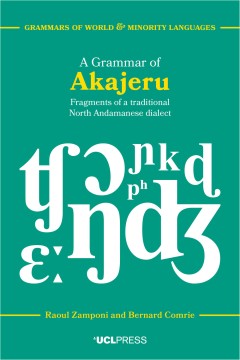
Grammar of Akajeru : fragments of a traditional north Andamanese dialect
A Grammar of Akajeru describes aspects of the grammatical system and lexicon of Akajeru, a traditional dialect of the North Andamanese language, as it was reportedly used around the beginning of the twentieth century. It is based primarily on the fragments of this variety provided by the British anthropologist Alfred R. Radcliffe-Brown and scattered among the published results of his anthropolo…
- Edition
- -
- ISBN/ISSN
- 9781800080935
- Collation
- xi, 170 p.
- Series Title
- -
- Call Number
- 495.9 AGR R

A grammar of the Eastern European Hasidic Hebrew tale
This volume constitutes the first reference grammar of the Hasidic Hebrew hagiographic tales composed in late nineteenth- and early twentieth-century Eastern Europe. It presents a thorough survey of Hasidic Hebrew orthography, morphology, syntax, and lexis illustrated with extensive examples.
- Edition
- -
- ISBN/ISSN
- 9789004281622
- Collation
- x, 450 p.
- Series Title
- Studies in Semitic languages and linguistics
- Call Number
- 492.47 KAH g
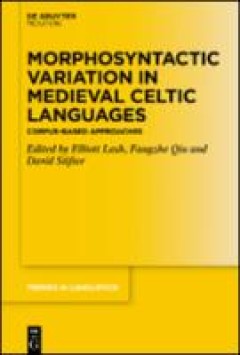
Morphosyntactic variation in medieval Celtic languages : corpus-based approaches
This book showcases the state of the art in corpus-based linguistic analysis of Celtic languages (specifically, Old/Middle Irish, Middle Welsh, and Cornish). It explores corpus approaches to morphosyntactic variation in the medieval Celtic languages and, for the first time, situates them in the broader field of computational and corpus linguistics by providing descriptions of tools for processi…
- Edition
- -
- ISBN/ISSN
- 9783110680744
- Collation
- xviii, 396 p. : ill.
- Series Title
- -
- Call Number
- 491.627 LAS m
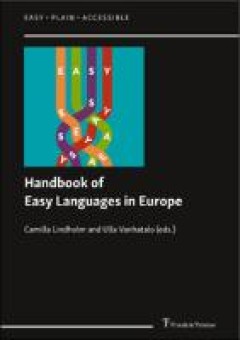
Handbook of easy languages in Europe
The Handbook of Easy Languages in Europe describes what Easy Language is and how it is used in European countries. It demonstrates the great diversity of actors, instruments and outcomes related to Easy Language throughout Europe. All people, despite their limitations, have an equal right to information, inclusion, and social participation. This results in requirements for understandable langua…
- Edition
- -
- ISBN/ISSN
- 9783732991952
- Collation
- 623 p.
- Series Title
- -
- Call Number
- 400 LIN h

Ancient greek I : a 21st century approach
In this elementary textbook, Philip S. Peek draws on his twenty-five years of teaching experience to present the ancient Greek language in an imaginative and accessible way that promotes creativity, deep learning, and diversity. The course is built on three pillars: memory, analysis, and logic. Readers memorize the top 250 most frequently occurring ancient Greek words, the essential word end…
- Edition
- -
- ISBN/ISSN
- 9781800642560
- Collation
- xxiii, 610 p. : ill. ; 20.3 cm.
- Series Title
- -
- Call Number
- 488 PEE a
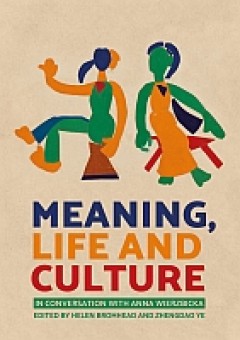
Meaning, life and culture : in conversation with Anna Wierzbicka
This book is dedicated to Anna Wierzbicka, one of the most influential and innovative linguists of her generation. Her work spans a number of disciplines, including anthropology, cultural psychology, cognitive science, philosophy and religious studies, as well as her home base of linguistics. She is best known for the Natural Semantic Metalanguage (NSM) approach to meaning—a versatile tool fo…
- Edition
- -
- ISBN/ISSN
- 9781760463939
- Collation
- XVIII, 515 p.
- Series Title
- -
- Call Number
- 801.4 MEA m
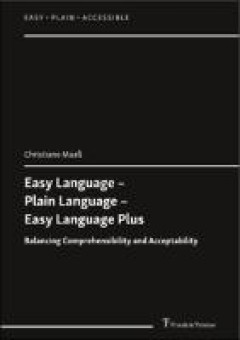
Easy Language – plain language – easy language plus : balancing comprehen…
This book shows how accessible communication, and especially easy-to-understand languages, should be designed in order to become instruments of inclusion. It examines two well-established easy-to-understand varieties: Easy Language and Plain Language, and shows that they have complementary profiles with respect to four central qualities: comprehensibility, perceptibility, acceptability and stig…
- Edition
- Vol. 3
- ISBN/ISSN
- 9783732992997
- Collation
- 301 p.
- Series Title
- Easy – Plain – Accessible, 3
- Call Number
- 428.2 MAA e
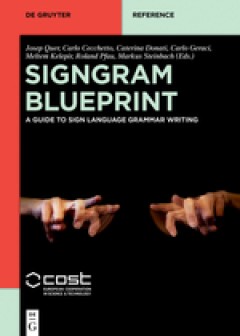
Signgram blueprint. A guide to sign language grammar writing
Current grammatical knowledge about sign languages is fragmentary and of varying reliability and is scattered in scientific publications where the description is often intertwined with the analysis. Comprehensive grammars are rare. This work is an innovative tool for the grammar writer: a full-fledged guide to describing all components of the grammars of sign languages in a thorough and systema…
- Edition
- -
- ISBN/ISSN
- 9781501511806
- Collation
- 824 p.; 22 cm.
- Series Title
- De Gruyter Reference
- Call Number
- 419 SIG s
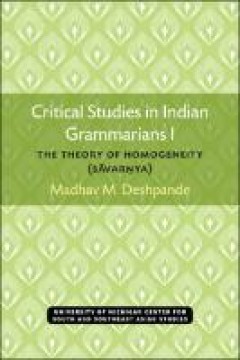
Critical studies in Indian grammarians I : the theory of homogeneity (Savarnya)
In the historical study of the Indian grammarian tradition, a line of demarcation can often be drawn between the conformity of a system with the well-known grammar of Pa?ini and the explanatory effectiveness of that system. One element of Pa?ini’s grammar that scholars have sometimes struggled to bring across this line of demarcation is the theory of homogeneity, or savar?ya, which concerns t…
- Edition
- -
- ISBN/ISSN
- 9780472901708
- Collation
- XIII, 224 p.
- Series Title
- Michigan Series In South And Southeast Asian Languages And Linguistics
- Call Number
- 491.4 DES c
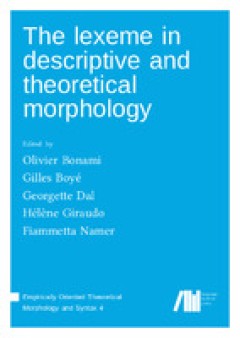
The lexeme indescriptive and theoretical morphology
After being dominant during about a century since its invention by Baudouin de Courtenay at the end of the nineteenth century, morpheme is more and more replaced by lexeme in contemporary descriptive and theoretical morphology. The notion of a lexeme is usually associated with the work of P. H. Matthews (1972, 1974), who characterizes it as a lexical entity abstracting over individual inflected…
- Edition
- -
- ISBN/ISSN
- 9783961101108
- Collation
- -
- Series Title
- Empirically Oriented Theoretical Morphology and Syntax, 4
- Call Number
- 415.92 LEX l
 Computer Science, Information & General Works
Computer Science, Information & General Works  Philosophy & Psychology
Philosophy & Psychology  Religion
Religion  Social Sciences
Social Sciences  Language
Language  Pure Science
Pure Science  Applied Sciences
Applied Sciences  Art & Recreation
Art & Recreation  Literature
Literature  History & Geography
History & Geography